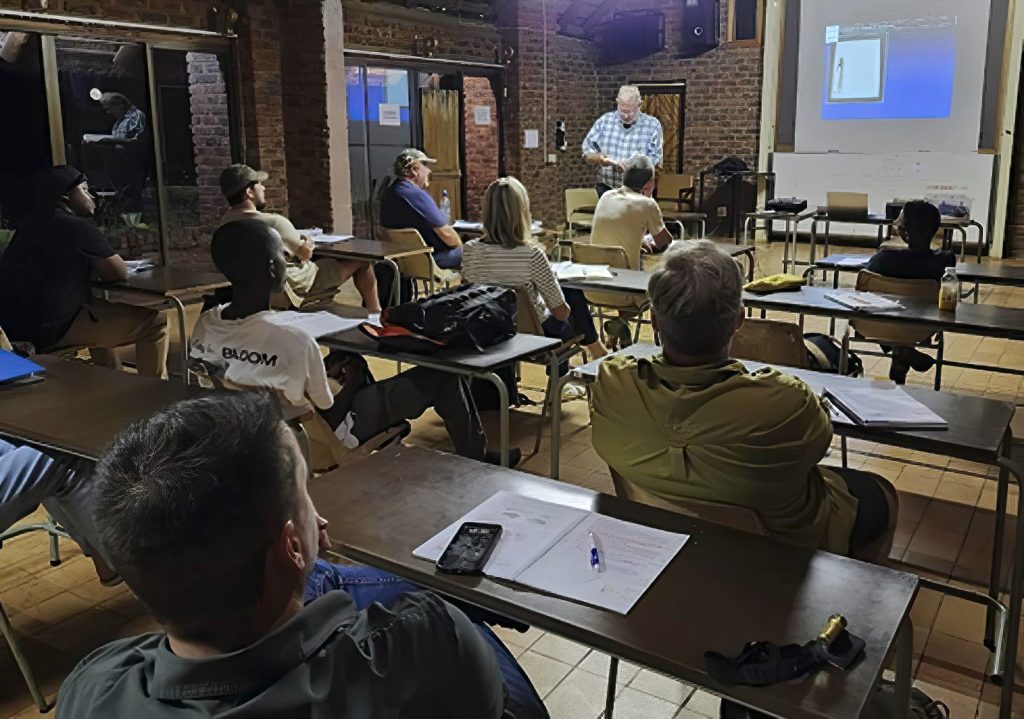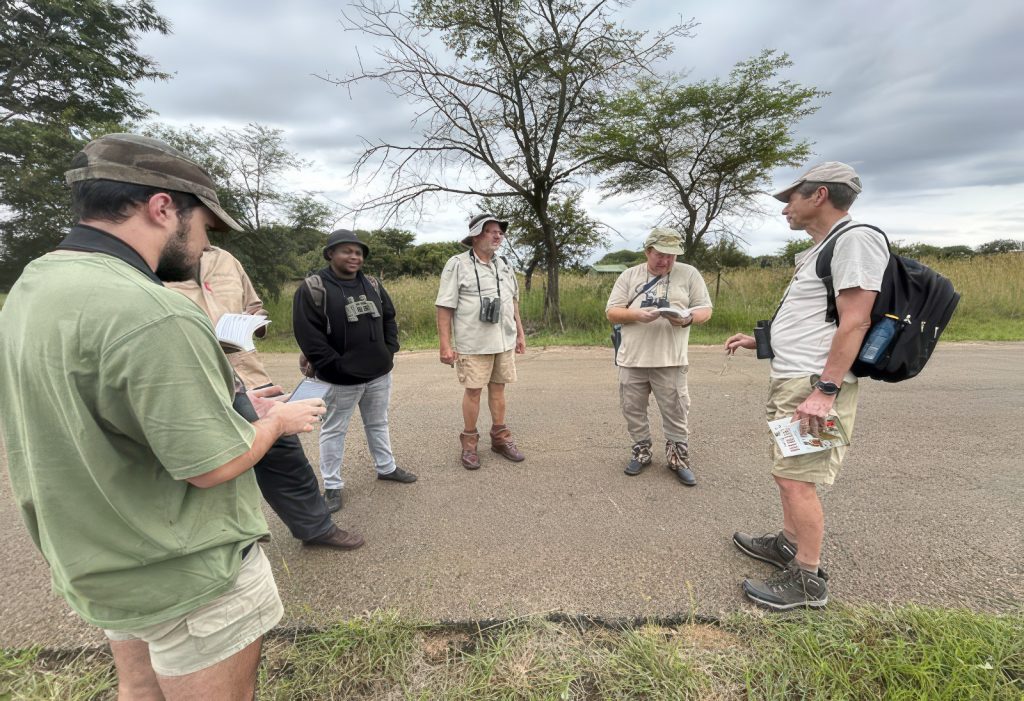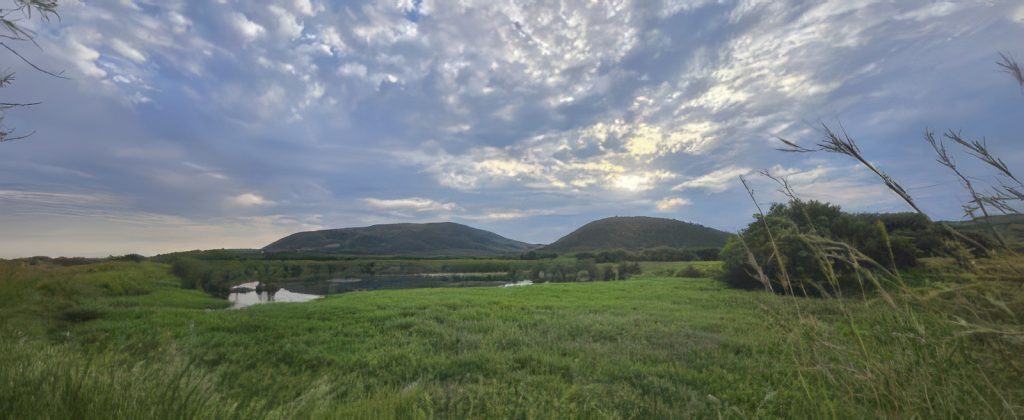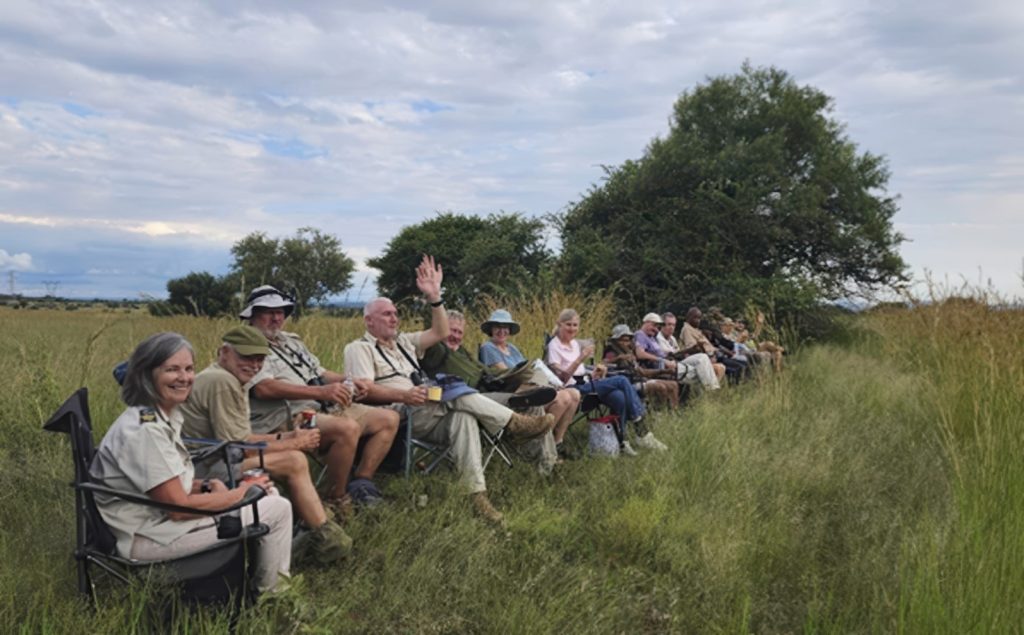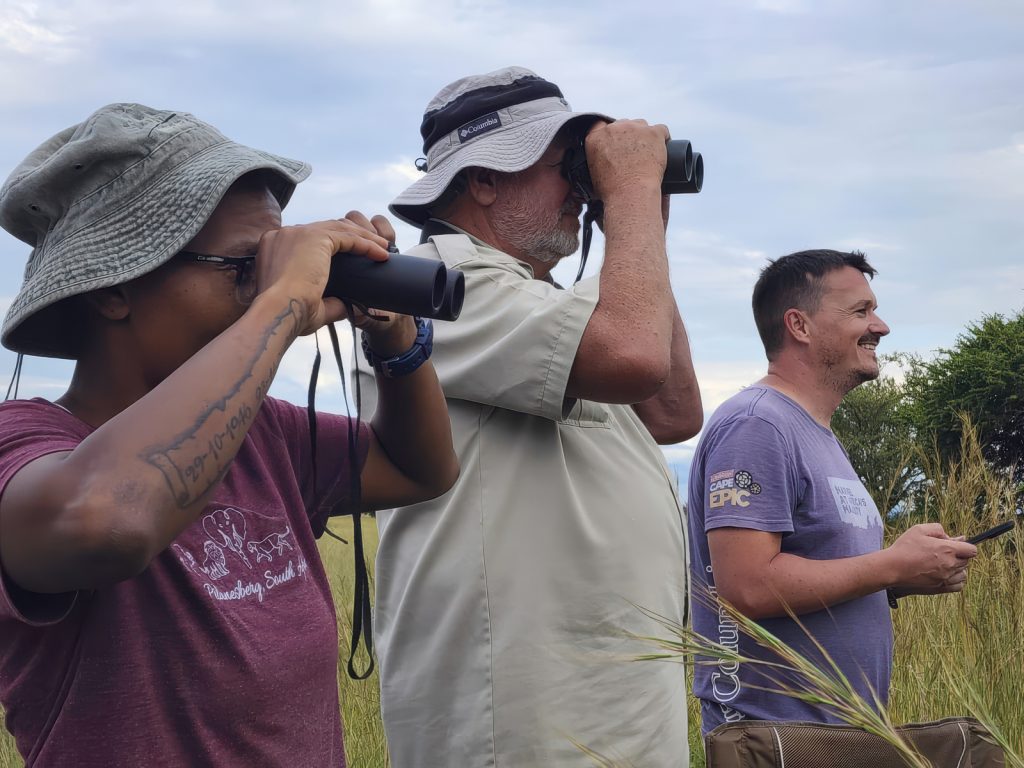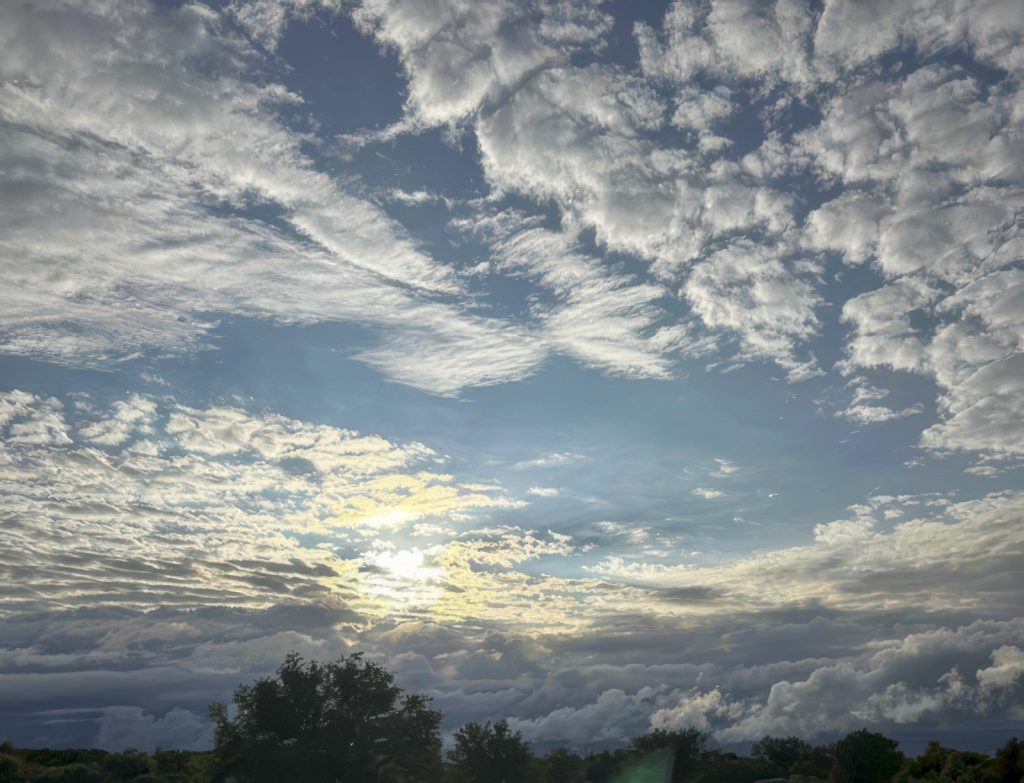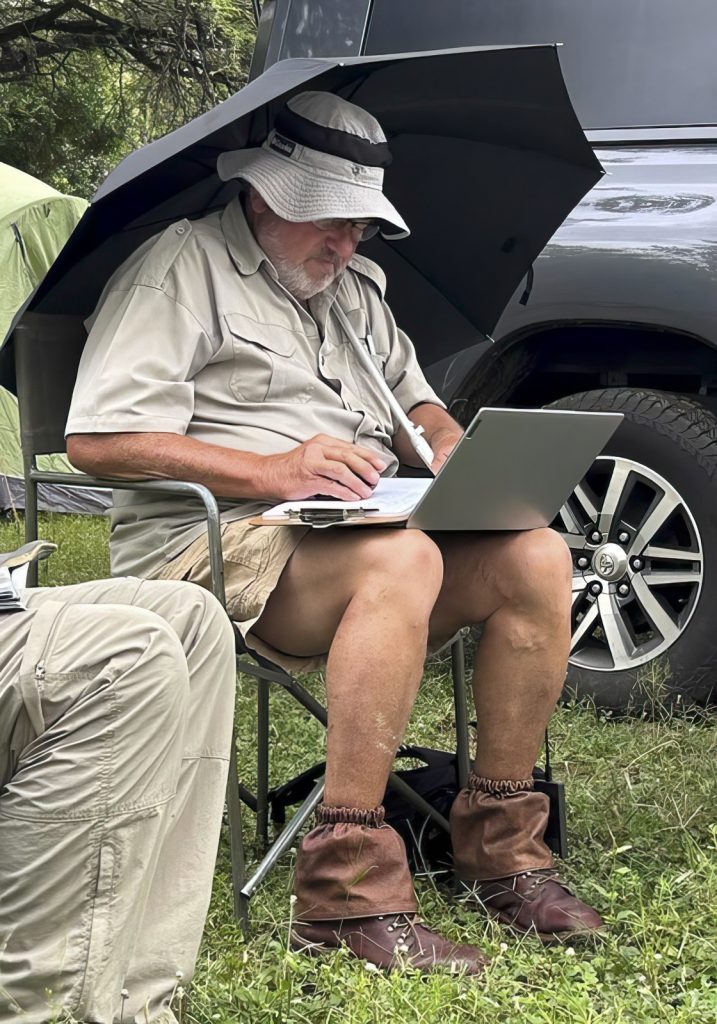Web Report by Madie Sweet (Team Rocky Slopes)
The Birds weekend commenced with setting up tents at the old HO Camp in Manyane, Pilanesberg. As usual, all students arriving early diligently studied at camp for the test on Saturday morning.
Friday evening was concluded with pouring rain. At Bushveld Mosaic weekends, one learns valuable lessons from experience; having wet bedding after the rain is no fun. Thereafter, you learn to plan strategically to ensure your bedding remains dry while your tent might get wet.
Saturday morning, rise and shine at 5 am to be ready to meet at 6 am at the HO gate. Ronel divided the group into two groups, with one group following Ulrich and the other following Bruce. Manyane Camp is the home range of several bird species.
With our binoculars, field guides, notebooks, and pencils, we set off to identify birds. According to Ulrich, when in doubt of which bird it is, consider the size, colour, call, the GISS, etc., and what does a birder and `an estate agent have in common? “Location, location, location”. Always refer to the Field Guide to confirm the distribution. One of the highlights was seeing a ‘snowball’ in the summer. The one shrike with a large white rump, which is conspicuous when it spreads and puffs up during it’s display. Also known as the black-backed puffback. Just a tip: never say “I have no idea” to Ulrich when he asks what bird that is. He will tell you:” No idea is a species of antelope that is blind”.
Our group visited the wastewater dam. Ulrich explained how to approach the dam. The tip is to be quiet, walk quietly through the long grass, sneak up and peek over at the dam to see what birds are in the area. The best is not to let the birds see you. Then slowly walk up onto the embankment from where you can stand to observe the birds. One of the birds worth mentioning was the African Jacana (Grootlangtoon).
After the walk, we returned to camp to complete a practical exercise, a short presentation of interesting facts about birds seen in Manyane Camp. It was an interesting exercise that provided an opportunity for each individual to present to the group. Interesting facts were presented to the group, and one of the notable facts was about the isiZulu name of the Green Wood Hoopoe – Hleka Mafazi, which translates to “cackling women”.
At long last, we wrote the Arthropod test, and all team members were relieved when it was done and dusted. After lunch, we attended a short lecture on what birds are, and then we headed off to the wetland area for bird viewing and sundowners.
Binoculars, long lens cameras, all ready to spot the variety of birds visible on the dam. Mollie initiated a little fun with a bucket of speckled eggs. Alan, who celebrated his birthday on Sunday, was asked to identify the bird that laid the eggs. Alan indicated the various colored speckled eggs were those of none other than the Big Chocolate Bird.
Ulrich, looking through his binoculars, asked, “And what is the name of the purple bird on the water between the grass on the left side of the white face duck. And the answer followed a purple hen. No…. the correct answer is an African Swamphen.
Dinner was at the camp braai. Unfortunately, no garlic bread? A sly baboon got away earlier in the afternoon with the garlic bread. HO Ronel, prepared this garlic bread with extra cheese and sun-dried tomatoes. HO Bruce tried to save the day, but the baboon was determined to hold on to its snack and disappeared into the bush.
Sunday morning, we started our walk at 6 am. The groups remained the same, but we swapped guides, and our group went with Bruce. It was another wonderful experience learning about the diverse variety of birds. We were pleasantly surprised by the young Burnt-necked Eremomela, which sat on a nearby branch and sang it’s morning song. What an awesome sight to see.
As the morning drew to a close, we attended the final lecture re the protection of habitat, which is crucial for the existence of species, and all people, especially birders, should prioritise conserving bird habitats, rather than simply adding another tick to their bird list. An important factor to consider is the bird’s status and whether it is listed on the Red List. It is essential to consider conditions that endanger some birds.
A weekend of birdwatching cannot end without a recording of the species seen. Typical of a passionate birder, author of bird books and a fieldworker, no matter where and how recording must be done. With his umbrella to screen out the bright light, there on his chair, with laptop and mouse, the list of bird species seen was recorded.
A total of 71 species, as correctly estimated by Des, who added a plus one to Karin’s estimate, were confirmed to have been seen on this wonderful Bird Module weekend.
Another great Bushveld Mosaic weekend. Thank you to Ulrich Oberprieler; Peter Gorden-Cumming; Ronel Engelbrecht and Bruce Allen.
ED’s Note: Thanks Madie for this entertaining reflection on the bird module.
